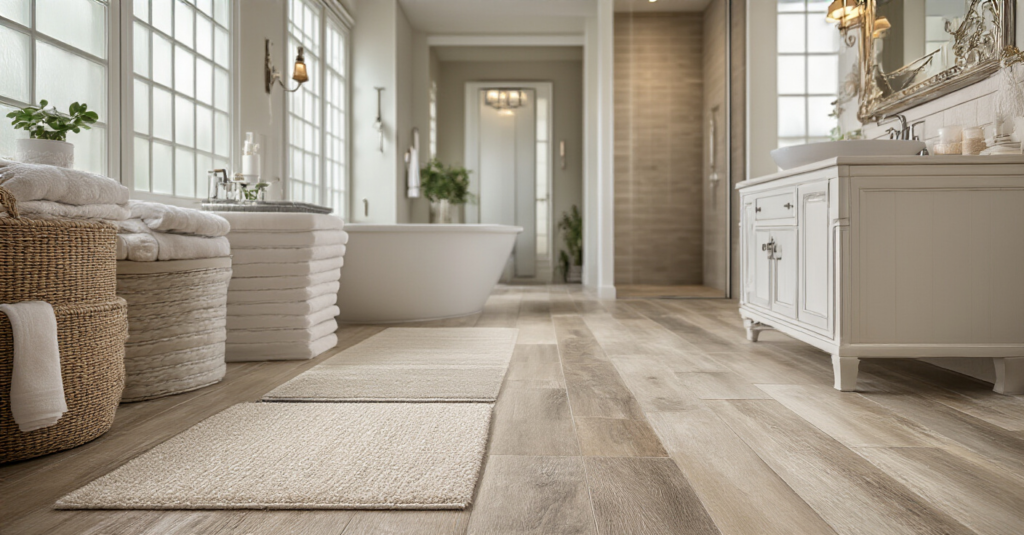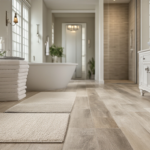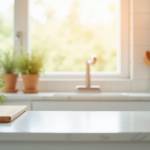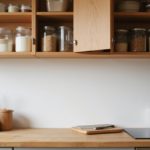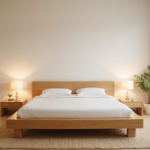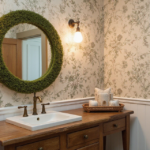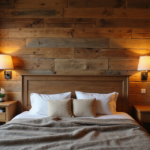Can we just talk for a moment about my biggest pet peeve? It’s when people use the words “water-resistant” and “waterproof” as if they’re the same thing. They are absolutely not, darling. And in a bathroom—a space that’s essentially designed for humidity, steam, and splashes—that little difference is everything. Choosing a floor based on a pretty picture in a magazine without understanding what’s happening underneath is a recipe for disaster. I’ve seen it happen.
So, forget the marketing fluff. You’re busy, I get it. Here is the real story on what actually matters when choosing a floor for the most hardworking room in your home. It’s all about blending timeless good looks with the kind of practicality that lets you live your life without worrying about every single splash and spill.
Critical Planning Before Selecting Your Bathroom Floor
Before you fall in love with a charming pattern, we have to do the slightly less glamorous (but absolutely essential) groundwork. Think of this as preparing a perfect canvas. Get this part right, and everything else falls beautifully into place. Ignore it, and even the most expensive tile in the world won’t save you.
1. Determine Your Bathroom’s Moisture Level for Optimal Material Choice
First things first: how wet does this particular bathroom get? A serene little powder room that only sees occasional hand-washing has entirely different needs than the main family bathroom where your children treat the tub like a miniature water park. Be honest with yourself. High-traffic, daily-shower bathrooms are in a completely different league. They require floors that are, for all intents and purposes, bulletproof.
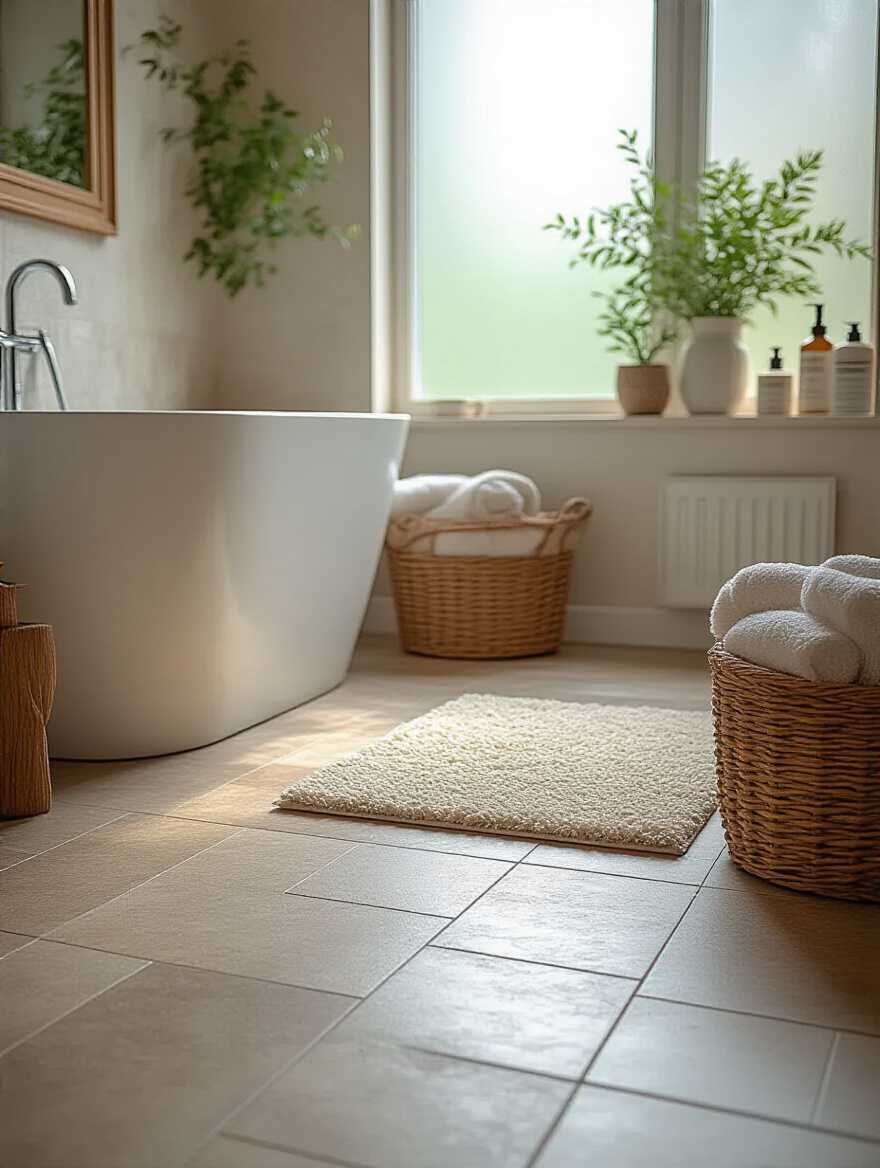
A classic mistake is to underestimate the power of steam. That long, hot shower you love? It’s saturating the air with moisture that will find its way into every nook and cranny. Here’s a little trick I tell my clients: run the shower on hot for 15 minutes, then turn on your exhaust fan. If the mirror isn’t clear in another 15 minutes, your fan isn’t cutting it, and you need to choose your flooring as if you’re outfitting a ship’s deck.
Properly assessing your bathroom’s moisture level isn’t just about picking a material; it’s the first line of defense in protecting your home from much bigger problems down the line.
2. Accurately Measure Your Subfloor for Proper Installation Preparation
This may sound dreadfully dull, but trust me on this. I once watched a dear friend, who was renovating her coastal cottage, run out of the most beautiful hand-painted tile with just a few square feet left to go. The new batch, when it finally arrived, was from a different dye lot. The color was just a fraction off, but it was enough to make her wince every time she saw it. An absolutely heartbreaking—and completely avoidable—mistake.
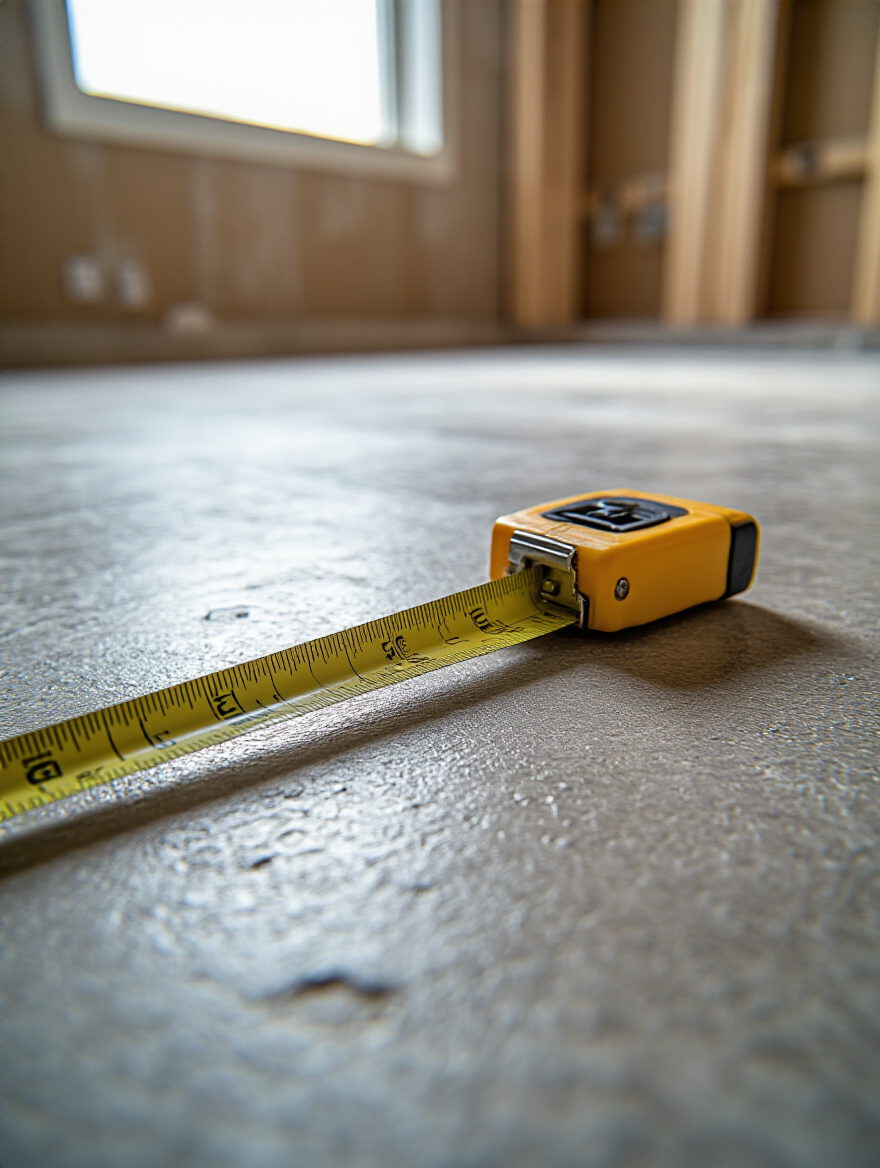
When you measure, calculate the total square footage and then add 10-15% for cuts and waste. If you’re planning an intricate pattern like a herringbone or diagonal layout, bump that up to 20%. It feels wasteful to buy material you might not use, but it’s infinitely better than the alternative. Having extra also means you have perfectly matched tiles for any future repairs. It’s the cheapest insurance policy you’ll ever buy.
With your measurements and extra material secured, you can plan your layout with confidence, ensuring a result that looks intentional and beautifully executed.
3. Establish a Clear Budget to Guide Your Bathroom Flooring Selection
Let’s talk money, honey. It’s so easy to get swept away by a gorgeous slab of marble, but a budget is your best friend in any design project. It’s not about restriction; it’s about clarity. The biggest mistake I see people make is only budgeting for the floor itself. The pretty part. But the final cost is so much more than that.
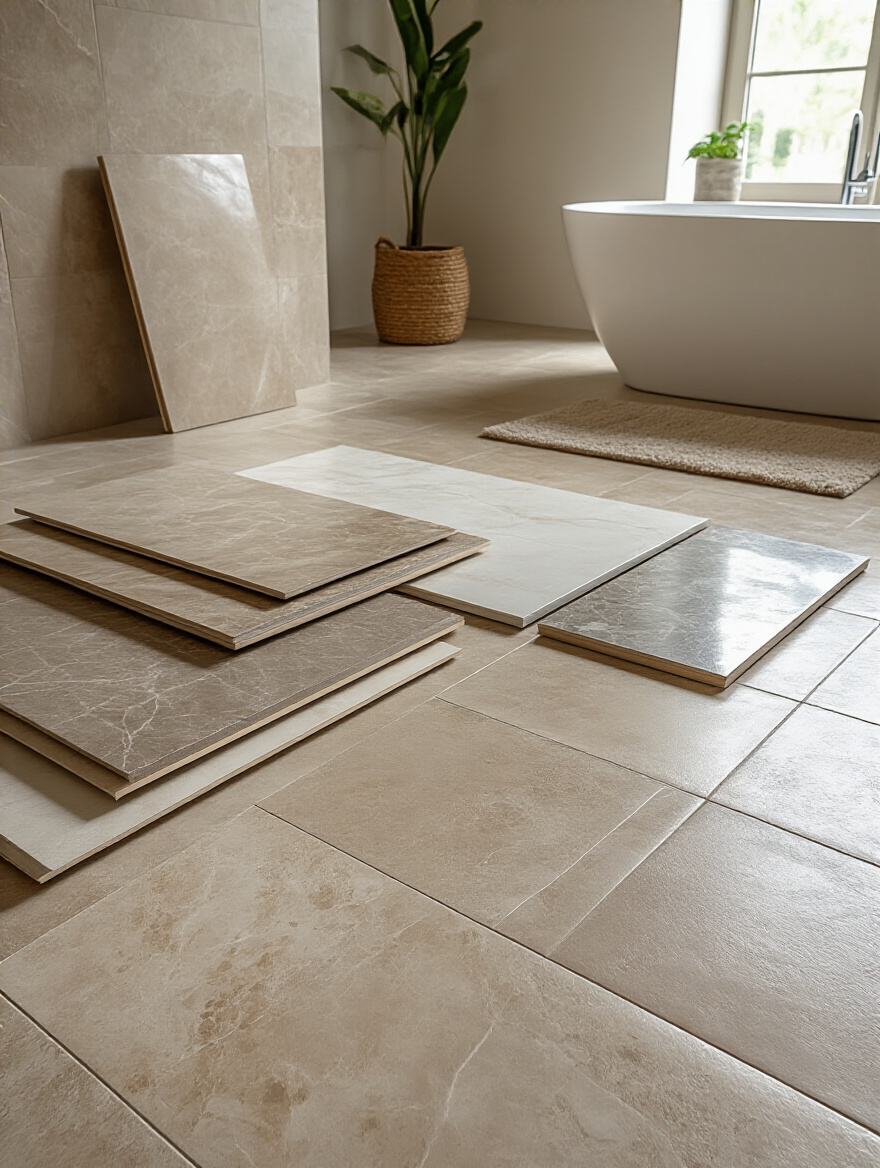
You must factor in the “un-fun” things: removal of the old floor, potential subfloor repairs (you never know what horrors lurk beneath), delivery fees, installation labor, grout, sealant, and a new threshold. And my most important rule: always, always have a 10-20% contingency fund. This is for the inevitable “oops” moment, like when the plumber discovers a leaky pipe that needs fixing before your new floor can go in. Without that cushion, a small hiccup can derail your entire project.
Once you have a realistic, all-in number, you can browse with purpose, knowing exactly which options will give you the most beauty and performance for your buck.
4. Align Your Flooring Selection with Desired Style and Ambiance
Now for the fun part! The floor is the foundation of your bathroom’s entire design story. It sets the tone for everything else—the vanity, the fixtures, the wall color. Are you dreaming of a serene, spa-like retreat? A crisp and classic coastal look? Or perhaps a charmingly preppy powder room with a pop of personality? The floor is where that story begins.
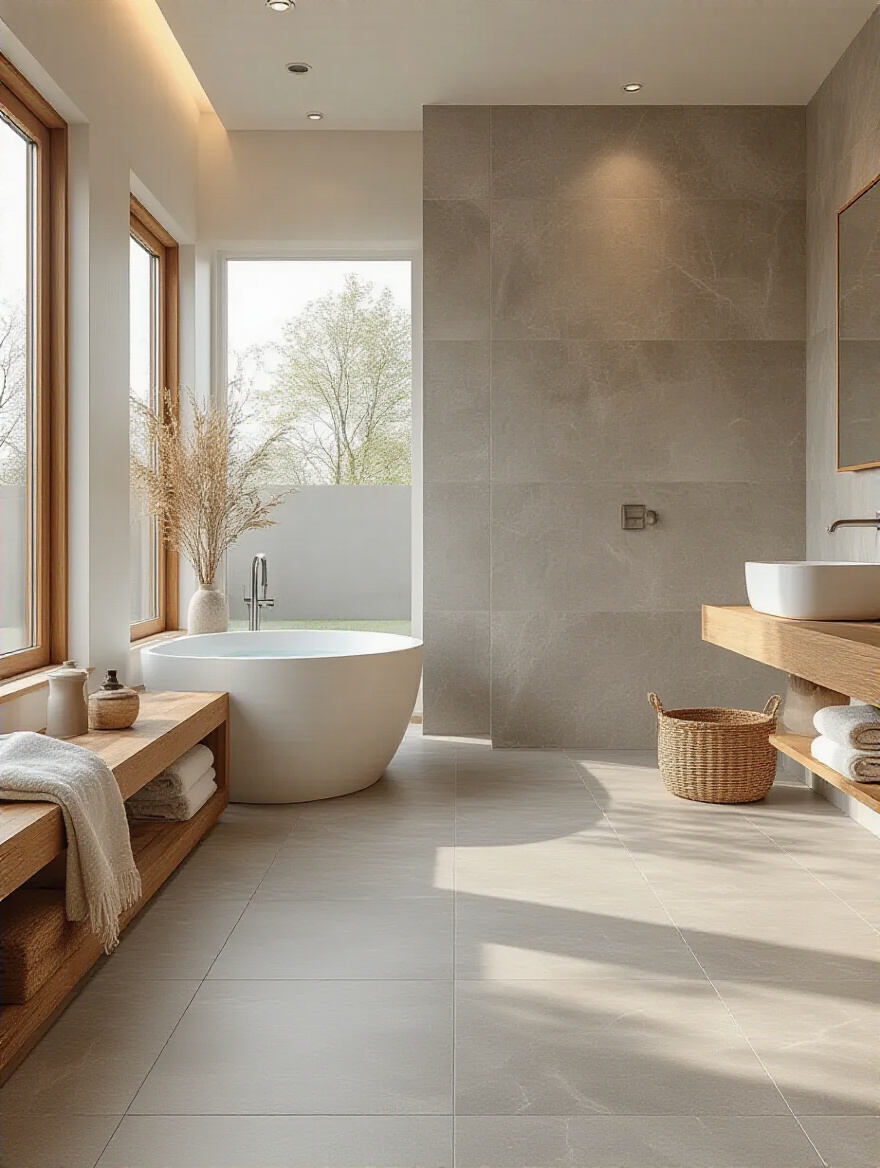
Don’t choose your flooring in a vacuum. Collect samples and look at them in your actual bathroom, next to your vanity and tub, under both natural and artificial light. A tile that looked like a soft, dove grey in the showroom might read starkly blue in the morning light of your space. Consider the scale, too. A bold, large-scale pattern might overwhelm a tiny powder room, while a delicate mosaic could get lost in a grand master bath.
“Your floor is the anchor of the room’s design. It grounds the space and should feel like a deliberate, thoughtful choice that harmonizes with every other element.”
Your goal is a cohesive narrative where the flooring feels like the perfect opening line.
5. Prioritize Slip Resistance for Enhanced Bathroom Safety and Functionality
I know, I know, “slip resistance” doesn’t sound very glamorous, but it is one of the most important things to consider. A bathroom floor is, by its very nature, a wet floor. Choosing a material that becomes a skating rink the moment it gets damp is simply asking for trouble, especially if you have little ones or are planning to age gracefully in your home.
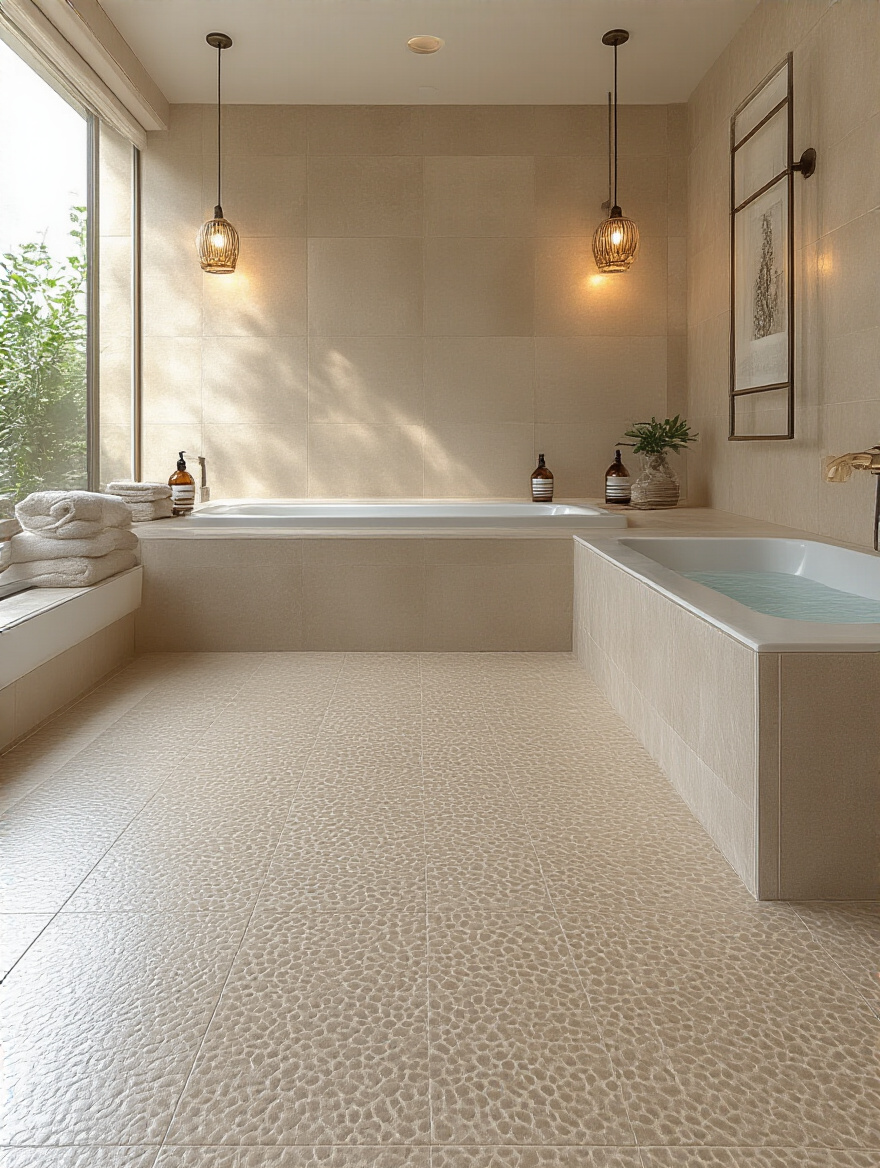
You don’t have to sacrifice style for safety. Many beautiful tiles have lovely textured or matte finishes that provide excellent grip. Smaller tiles, like a classic basketweave or penny tile, are also a fantastic choice because the increased number of grout lines creates more friction underfoot. Look on the tile box for something called a DCOF rating; for a bathroom floor, you want a number of 0.42 or higher. It’s a simple check that can give you enormous peace of mind.
This isn’t just about ticking a safety box; it’s about creating a space that feels comfortable, secure, and truly functional for everyone who uses it.
Exploring Popular & Durable Hard Surface Options
Hard surfaces are the undeniable classics of the bathroom world, and for good reason. They are champions of durability and Water Resistance, offering a clean, timeless elegance that can suit any style. These are the investment pieces, the tried-and-true choices that will look just as lovely in twenty years as they do today.
6. Select Porcelain Tile for Superior Water Resistance and Durability
If you want a floor that is beautiful, stylish, and tough as nails, look no further than porcelain. It’s fired at incredibly high temperatures, making it denser and far less porous than its ceramic cousin. With a water absorption rate of less than 0.5%, it basically scoffs at water. This makes it the absolute gold standard for any high-moisture area, especially a shower floor.
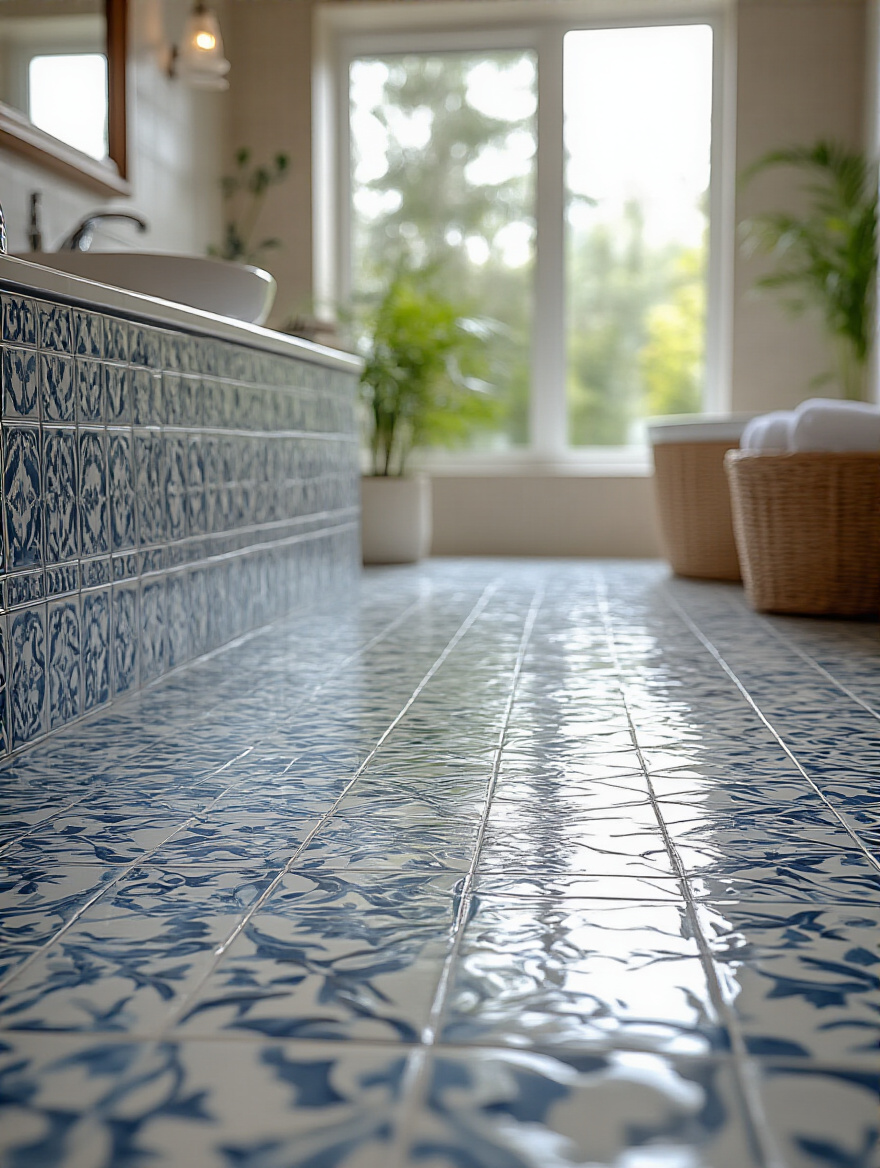
What I love most about modern porcelain is its incredible versatility. Thanks to digital printing, it can mimic the look of anything from Calacatta marble to weathered wood planks with startling realism. You can get that wildly expensive, high-maintenance look you’ve been dreaming of, but in a material that you can practically clean with a garden hose. It’s the perfect marriage of classic beauty and modern performance.
From here, you can choose its equally lovely, but slightly more budget-conscious, relative.
7. Choose Ceramic Tile as a Cost-Effective and Versatile Flooring Solution
Think of ceramic tile as porcelain’s charming and more accessible cousin. It’s been a bathroom staple for centuries for a reason: it’s durable, water-resistant, and comes in an endless array of colors, shapes, and patterns. This is where you can really have fun creating a classic checkerboard, a playful pattern, or a simple, clean field of color that lets other elements in the room sing.
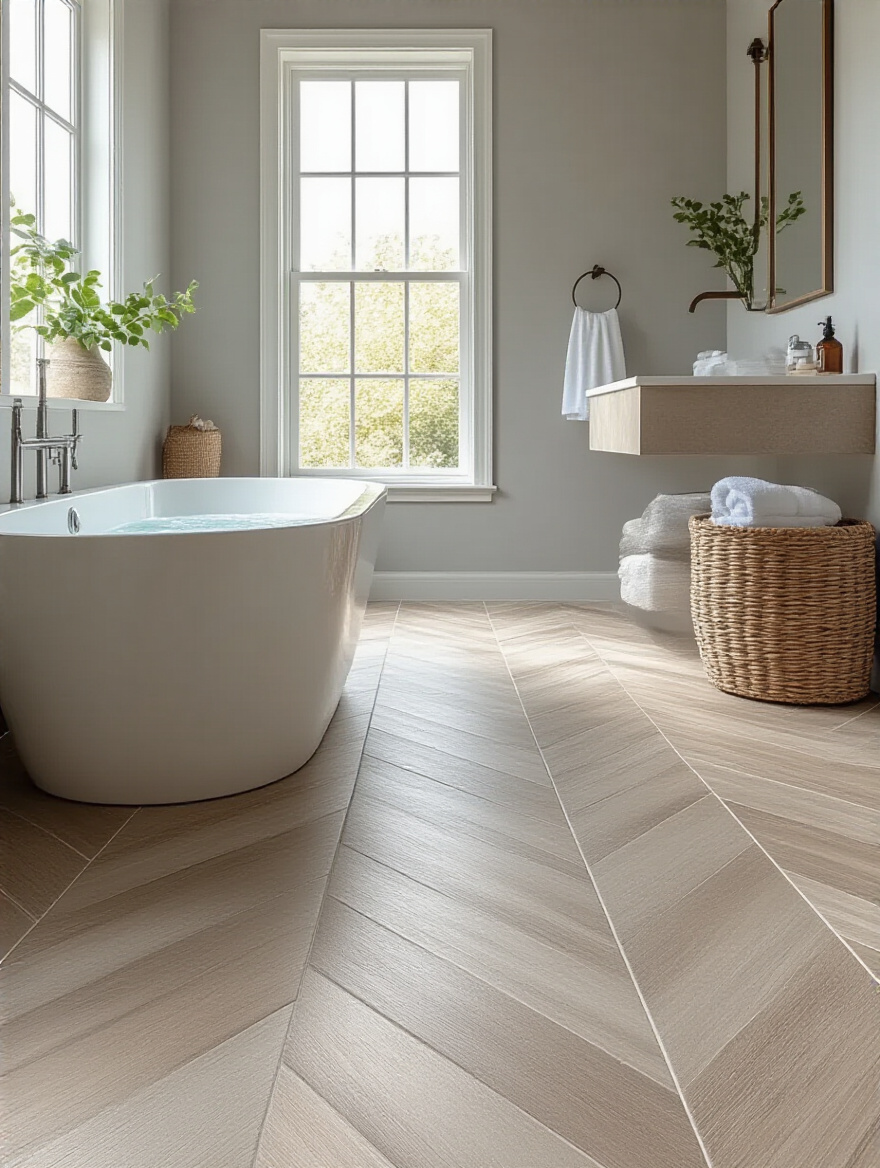
While it’s slightly more porous than porcelain, a properly glazed ceramic tile is more than capable of handling the demands of most bathrooms (outside of a steam shower, perhaps). And because it’s so budget-friendly, it allows you to allocate more of your funds toward a fabulous vanity or some truly special sconces. It’s a smart, stylish workhorse that never disappoints.
For those seeking unparalleled elegance, however, nothing compares to the real thing.
8. Install Natural Stone Tile for Unmatched Luxury and Timeless Appeal
Ah, natural stone. There is simply nothing that compares to the depth, variation, and history inherent in a material pulled from the earth. Marble, travertine, limestone—each piece is a unique work of art, lending a sense of permanence and gravitas to a space that simply cannot be replicated. It’s the ultimate quiet luxury, a choice that whispers elegance rather than shouts it.
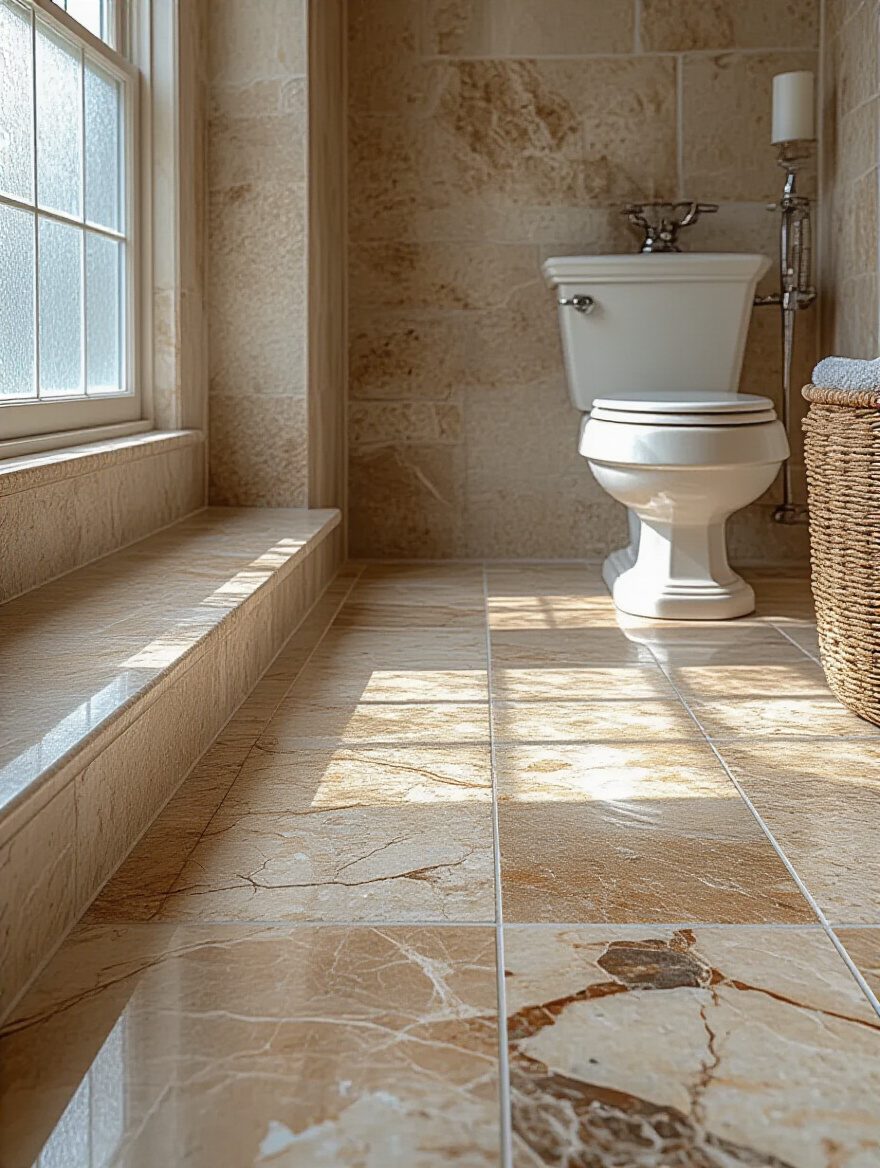
Now, let’s be candid. Natural stone is like a beautiful silk blouse: it’s breathtaking, but it requires a bit of care. It’s porous and must be sealed properly and regularly to protect it from stains and water. I always tell my clients, “Don’t invest in a marble floor unless you’re also willing to invest in the time to care for it.” If you are, the reward is a floor of unparalleled beauty that will only grow more distinguished with age.
If you love the look of stone but want more pattern, our next option is a perfect fit.
9. Consider Mosaic Tiles for Custom Designs and Enhanced Visual Interest
Mosaic tiles are the jewelry of the flooring world! They are perfect for adding a bespoke touch and a dash of personality. From a classic marble basketweave that feels eternally chic to a glossy penny tile that brings a touch of vintage charm, mosaics allow you to create custom patterns, borders, or even an entire “rug” effect on your floor.
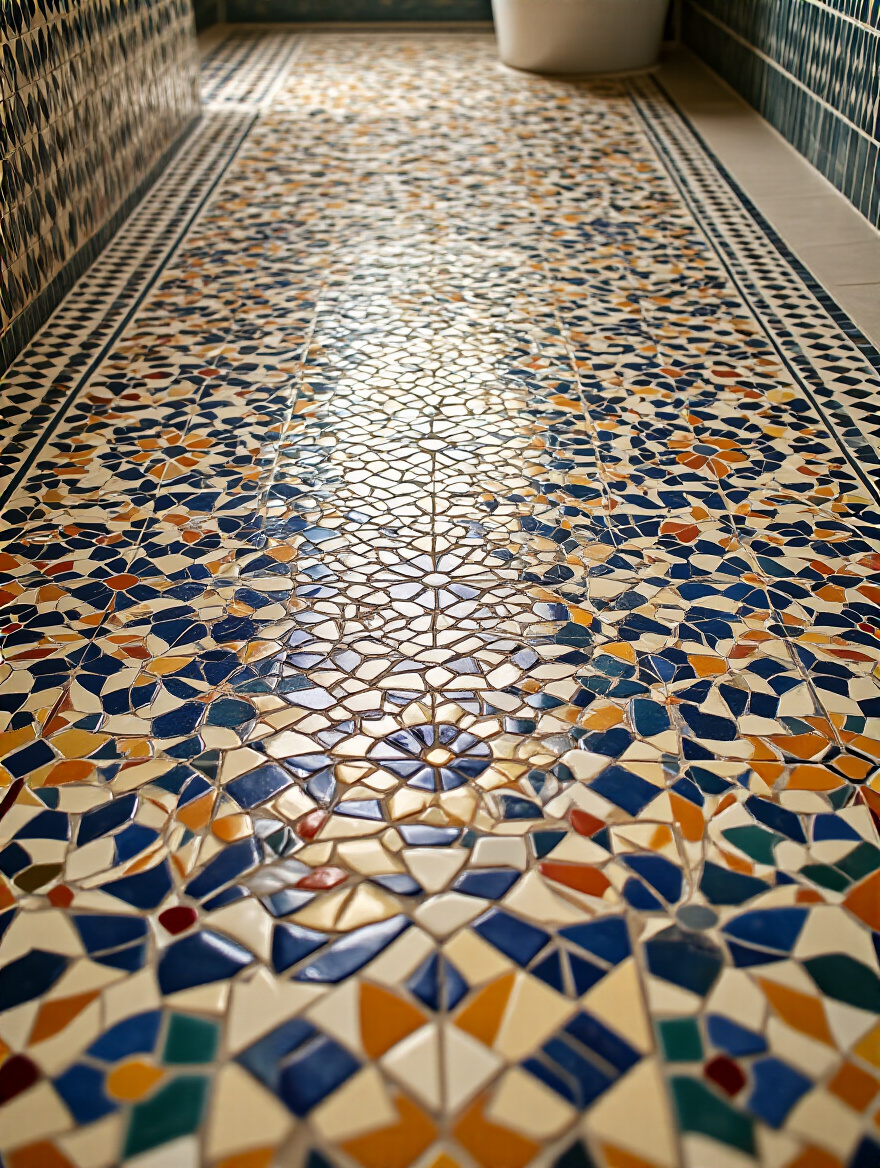
One of the wonderful, and often overlooked, benefits of a mosaic floor is its built-in slip resistance. All those glorious grout lines create a textured surface that provides excellent traction, making it an especially brilliant choice for a shower floor or a bathroom used by children. It’s a perfect example of how thoughtful design can be both beautiful and brilliantly practical.
From the small and intricate, we now turn our attention to the large and dramatic.
10. Employ Large Format Tiles for Fewer Grout Lines and a Modern Look
For a clean, seamless, and almost monolithic look, large format tiles are a truly sophisticated choice. Using oversized tiles (think 24×24 inches or even larger 24×48-inch planks) dramatically reduces the number of grout lines. This not only creates a serene, uninterrupted surface that can make a small bathroom feel much larger, but it also means significantly less grout to clean. A major win!
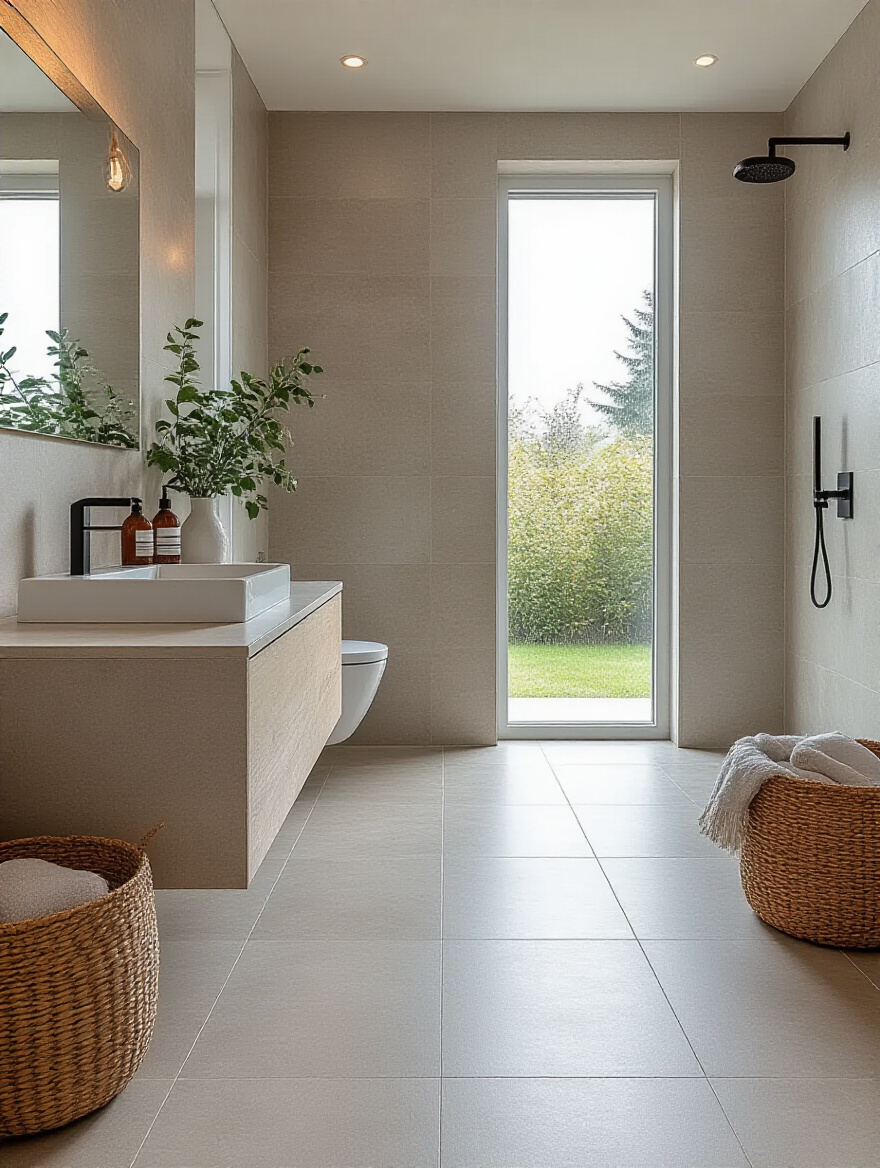
This is one area, however, where professional installation is non-negotiable. Achieving that flawless, perfectly flat surface with large tiles requires an absolutely level subfloor and a skilled hand. It’s not a place to cut corners. The end result is a look of modern, understated luxury that is both stunningly simple and incredibly easy to maintain.
Now, let’s move beyond tile and explore some wonderfully warm and resilient alternatives.
Resilient, Warm & Unique Bathroom Flooring Choices
While tile may be the king of the bathroom, sometimes you crave something a bit softer, warmer, or quieter underfoot. The world of resilient flooring has come a long way, offering fantastic options that combine the comfort you want with the water resistance you absolutely need.
11. Embrace Luxury Vinyl Plank (LVP) for Waterproof Wood and Stone Aesthetics
Listen, I know some traditionalists might wrinkle their noses at the word “vinyl,” but today’s Luxury Vinyl Plank is a completely different animal. This is not your grandmother’s peel-and-stick tile. High-quality LVP offers shockingly realistic wood and stone looks that are 100% waterproof. It’s the perfect solution for achieving that warm, wide-plank wood floor look in a bathroom without any of the warping, cupping, or water-damage worries.
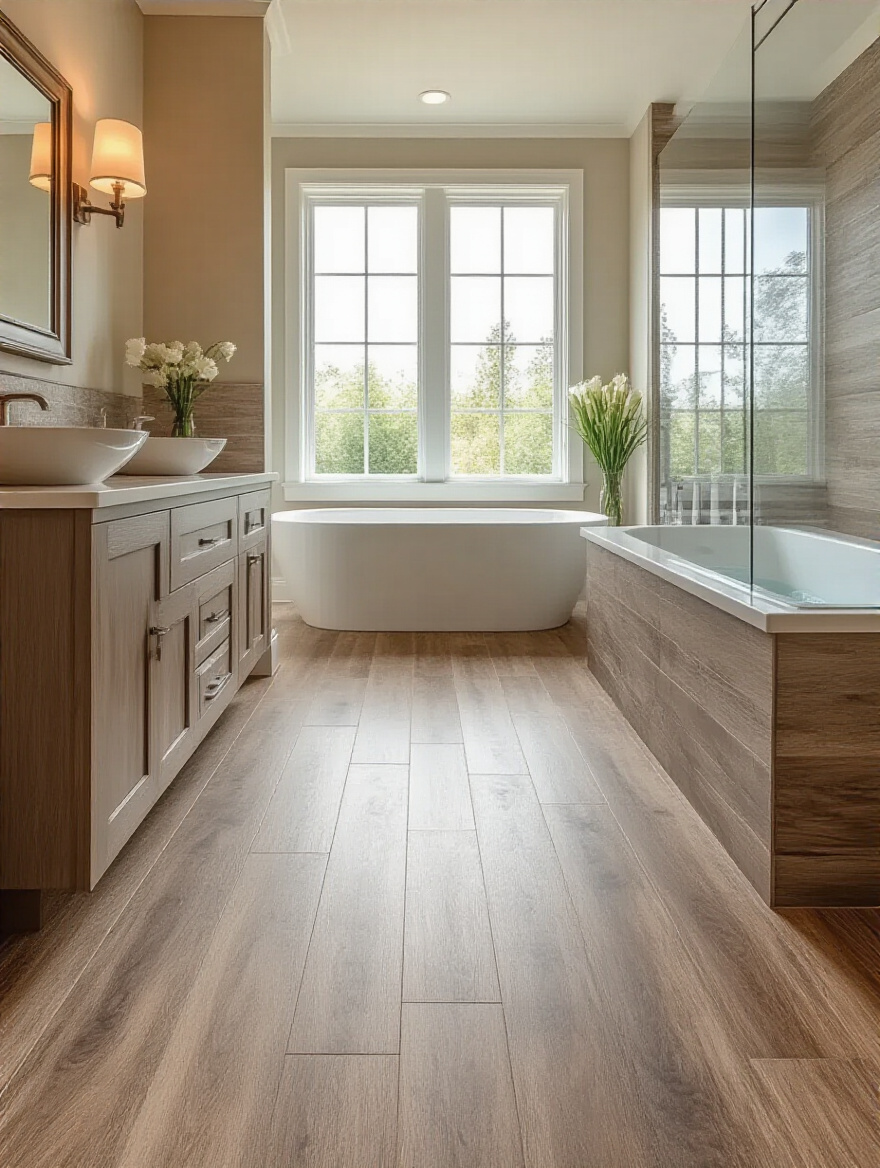
I especially love LVP for coastal homes or busy family bathrooms where durability is paramount. It’s soft underfoot, easy to clean, and can handle everything life throws at it. My advice is to invest in a quality product with a thick wear layer and a rigid “SPC” (Stone Plastic Composite) core. It provides the ultimate in stability and longevity, giving you a floor that’s both beautiful and practically indestructible.
For an even more seamless, budget-friendly option, let’s consider LVP’s close cousin.
12. Utilize Sheet Vinyl for Economical, Seamless Water Protection
Sheet vinyl is the unsung hero of truly waterproof flooring. Because it comes in large rolls and can often be installed in a small or average-sized bathroom with no seams at all, it creates a completely impenetrable barrier against water. It is, without a doubt, one of the most practical and budget-friendly choices you can make.
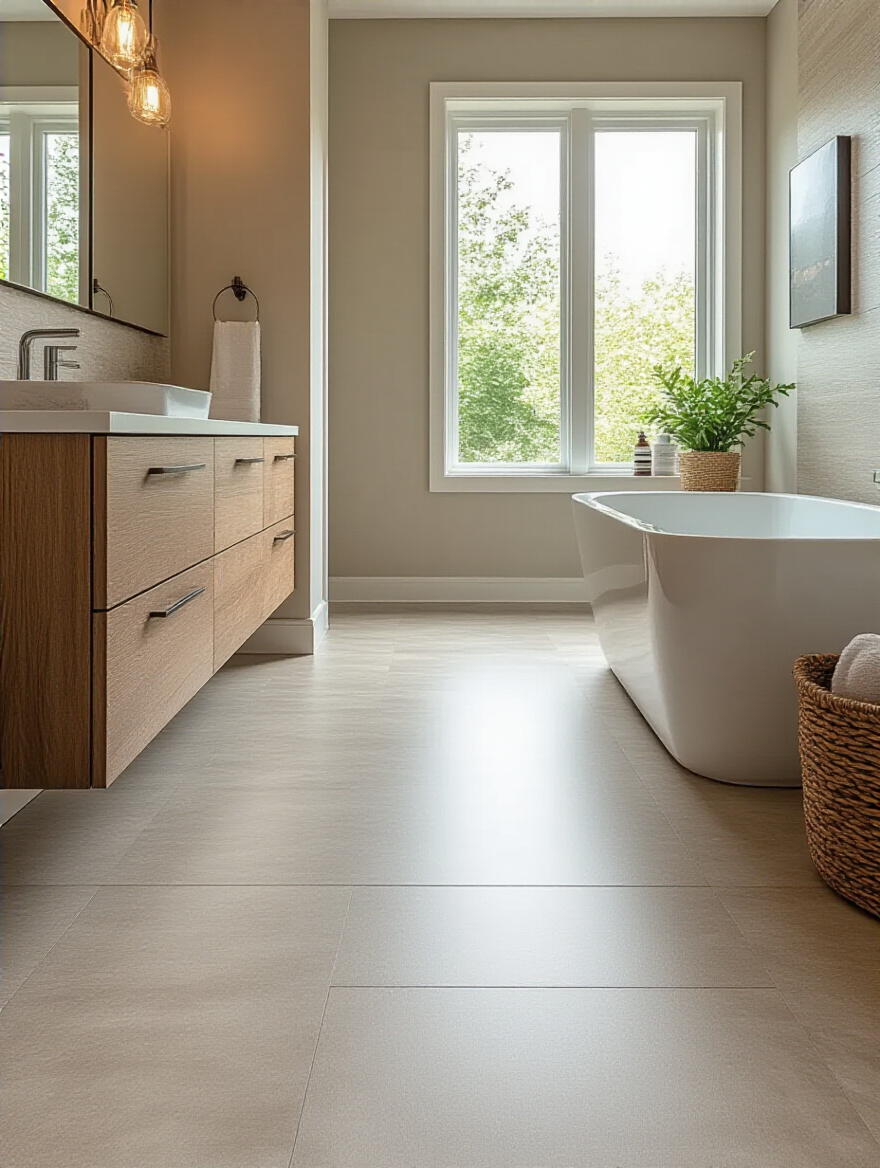
While it may not have the same luxurious feel as other materials, modern sheet vinyl has made leaps and bounds in style. You can find wonderful printed patterns—from charming florals to classic geometric designs—that can inject a huge amount of personality for a very small price. It’s an absolutely brilliant choice for a secondary bathroom, a laundry room, or any space where function and value are top priorities.
Next up is a material that’s as kind to the earth as it is to your feet.
13. Discover Cork Flooring’s Natural Warmth, Softness, and Sound Absorption
Cork is such a wonderfully unique and thoughtful choice for a bathroom. Harvested from the bark of cork oak trees, it’s sustainable, warm, and delightfully soft underfoot. Its natural cellular structure acts as an insulator, so it feels cozy on bare feet and absorbs sound, creating a quieter, more serene space. It’s also naturally resistant to mold and mildew.
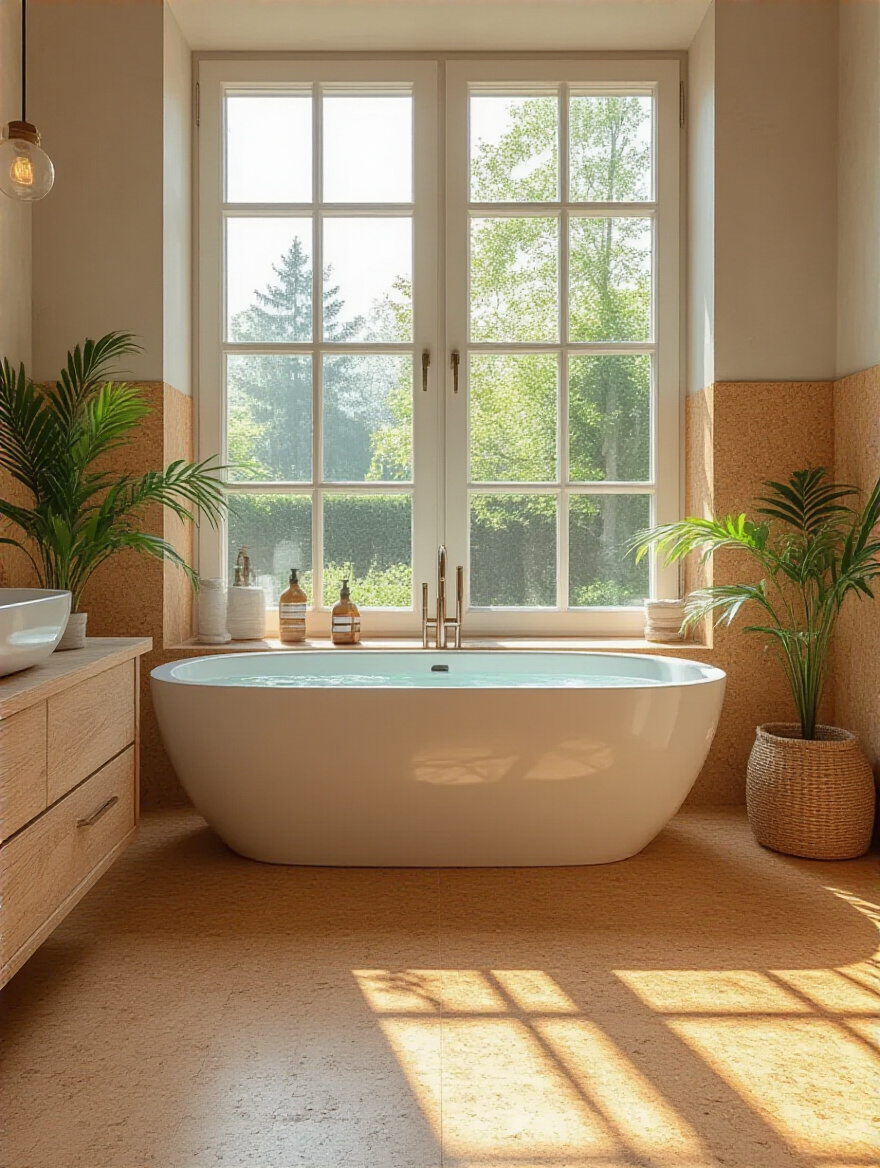
Now, the key to using cork in a bathroom is a meticulous installation. You must use a high-quality cork designed for wet areas and ensure it is sealed perfectly—I mean perfectly—with multiple coats of a marine-grade polyurethane finish. Think of it like varnishing a boat. With the right care and attention to its protective top coat, cork can be a uniquely comfortable and eco-conscious choice.
For those who love the look of wood but want something more substantial, our next option is the answer.
14. Evaluate Engineered Wood for Warmth with Added Moisture Resistance
So many people ask me, “Can I please have wood floors in my bathroom?” My answer is always a cautious “maybe.” Solid hardwood is an absolute no-go—it will warp in a heartbeat. But high-quality engineered wood, made with a stable plywood or HDF core, is a viable option for a powder room or a well-ventilated master bath that doesn’t see a lot of splashy action.
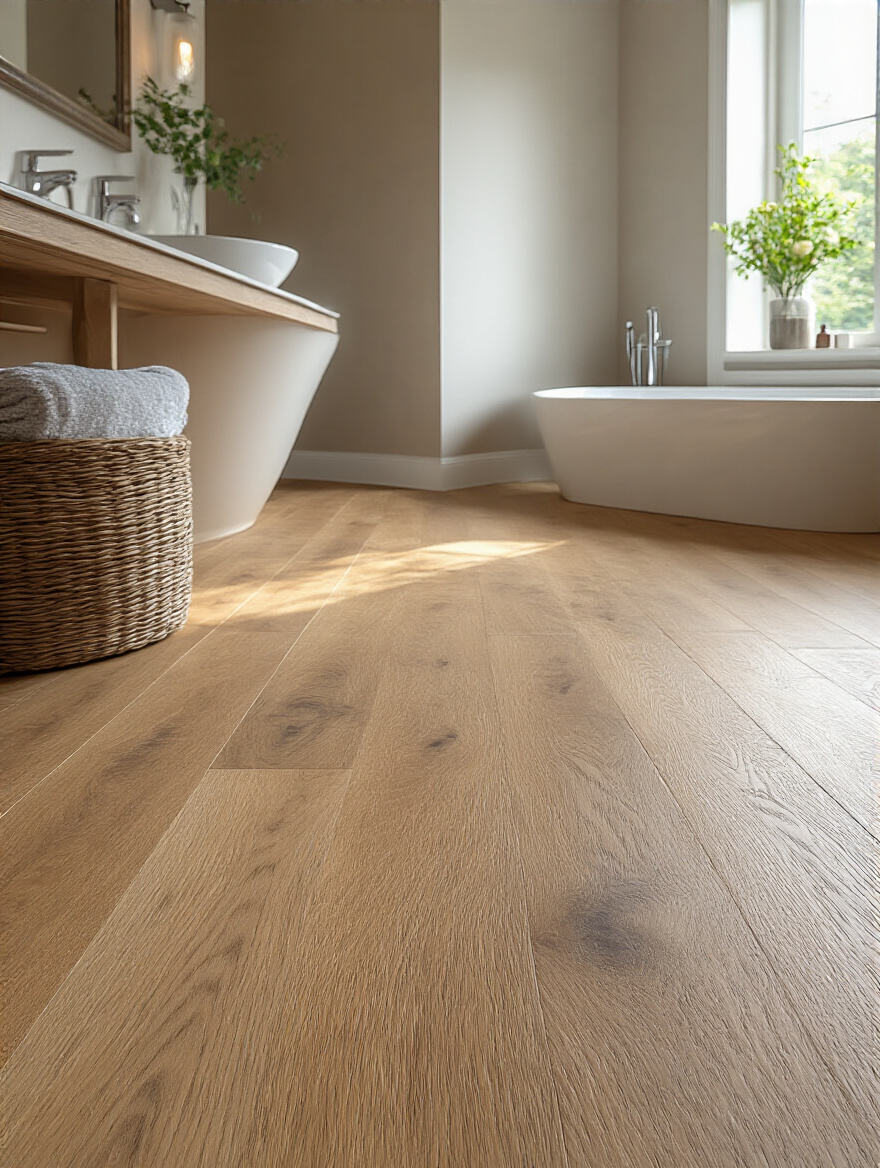
The beauty of engineered wood is that you get that authentic, warm, real-wood top layer, but with much better dimensional stability. It resists humidity far better than solid wood. You still need to be diligent—use an exhaust fan religiously, wipe up any spills immediately, and use plenty of bath mats. But if you’re set on the authentic look and feel of wood, this is the only way to do it smartly.
Finally, here’s a budget-friendly way to get that wood look without the worry.
15. Investigate Water-Resistant Laminate for Affordable Hardwood Appearance
Laminate has come a very long way. The new generation of water-resistant laminate is specifically designed for tougher environments like bathrooms and kitchens. It features a water-repellent core and tight-locking joints that can fend off topical spills for a day or even longer, giving you plenty of time to wipe them up.
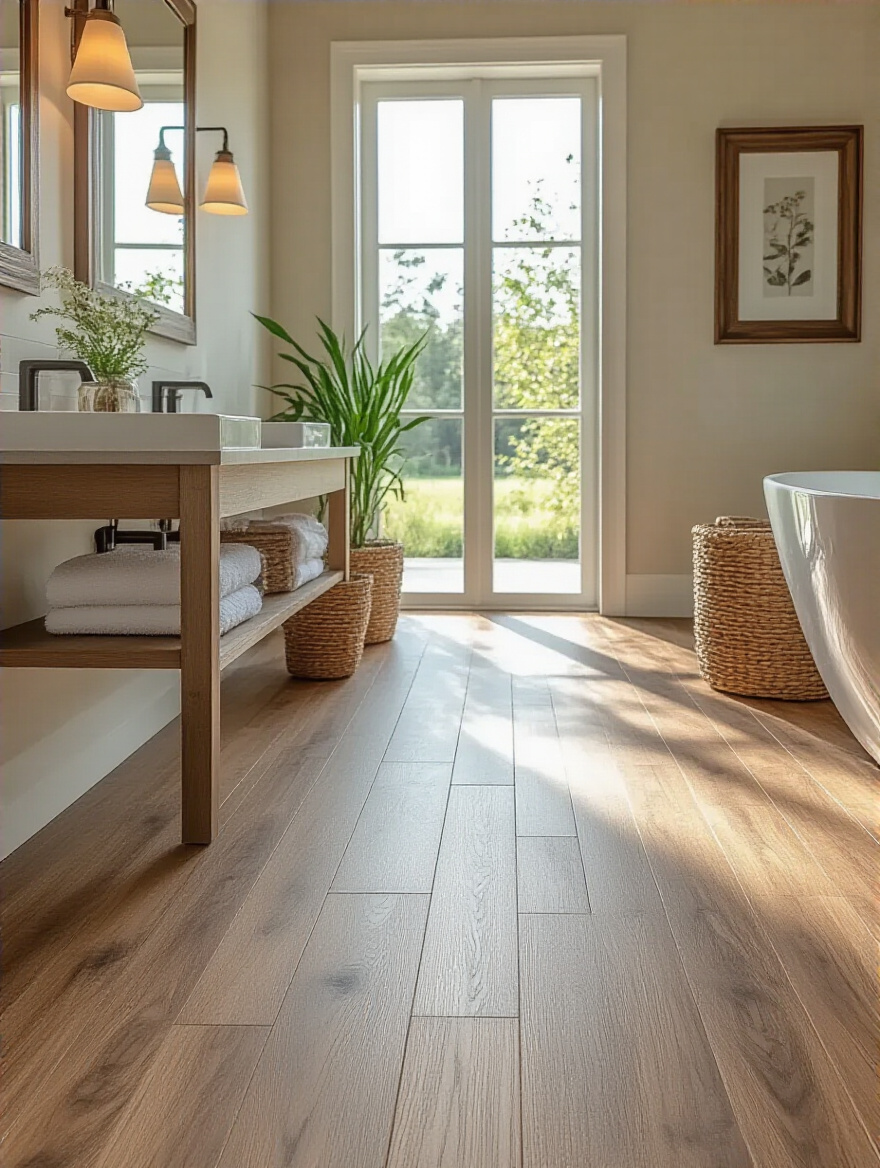
The high-definition printing on modern laminate is truly impressive, offering incredibly realistic wood looks at a fraction of the cost of engineered hardwood. For a budget-conscious renovation where you still want that warm, wood-grain aesthetic, it’s a very clever choice. Just be absolutely sure you are buying a product that is explicitly rated and warrantied for bathroom use—don’t just grab any old laminate off the shelf!
With our material chosen, let’s discuss a few upgrades that can take your bathroom from lovely to truly luxurious.
Advanced Considerations & Performance Enhancements
Once you’ve chosen your material, a few thoughtful upgrades can elevate your bathroom floor from simply functional to spectacularly comfortable and long-lasting. These are the details that make all the difference.
16. Plan for Underfloor Radiant Heating for Luxurious Bathroom Comfort
If there is one single upgrade I recommend to clients for a master bathroom, this is it. Installing radiant heating under your floor, especially a tile or stone floor, is an absolute game-changer. There is nothing—and I mean nothing—like stepping out of the shower onto a blissfully warm floor on a chilly morning. It is pure, unadulterated luxury.
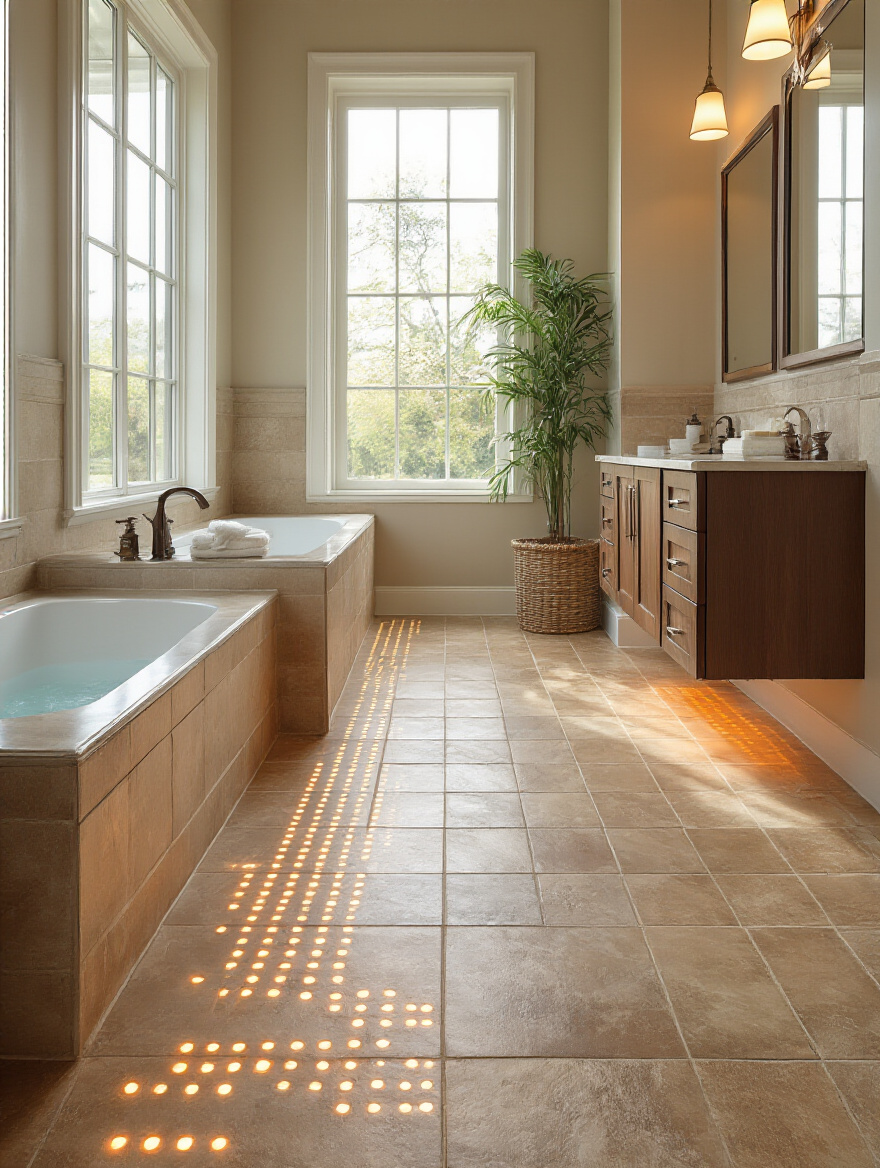
Beyond the sheer comfort factor, it’s also an efficient way to heat the space, providing gentle, even warmth from the ground up. It’s the kind of feature that feels like a daily indulgence and adds significant “wow” factor and value to your home. If your budget allows, it is an investment in your own comfort that you will never, ever regret.
Before we can add luxury, though, we must ensure our foundation is perfect.
17. Address Uneven Subfloors Before Laying Any New Material Properly
This is the cardinal rule of flooring: your finished floor is only as good as the subfloor beneath it. Laying beautiful, expensive tile over a subfloor that is bumpy or has a slight slope is like putting a couture gown on a broken mannequin. It’s a waste of time and money, and it will lead to cracked tiles, gapping planks, and a world of frustration.
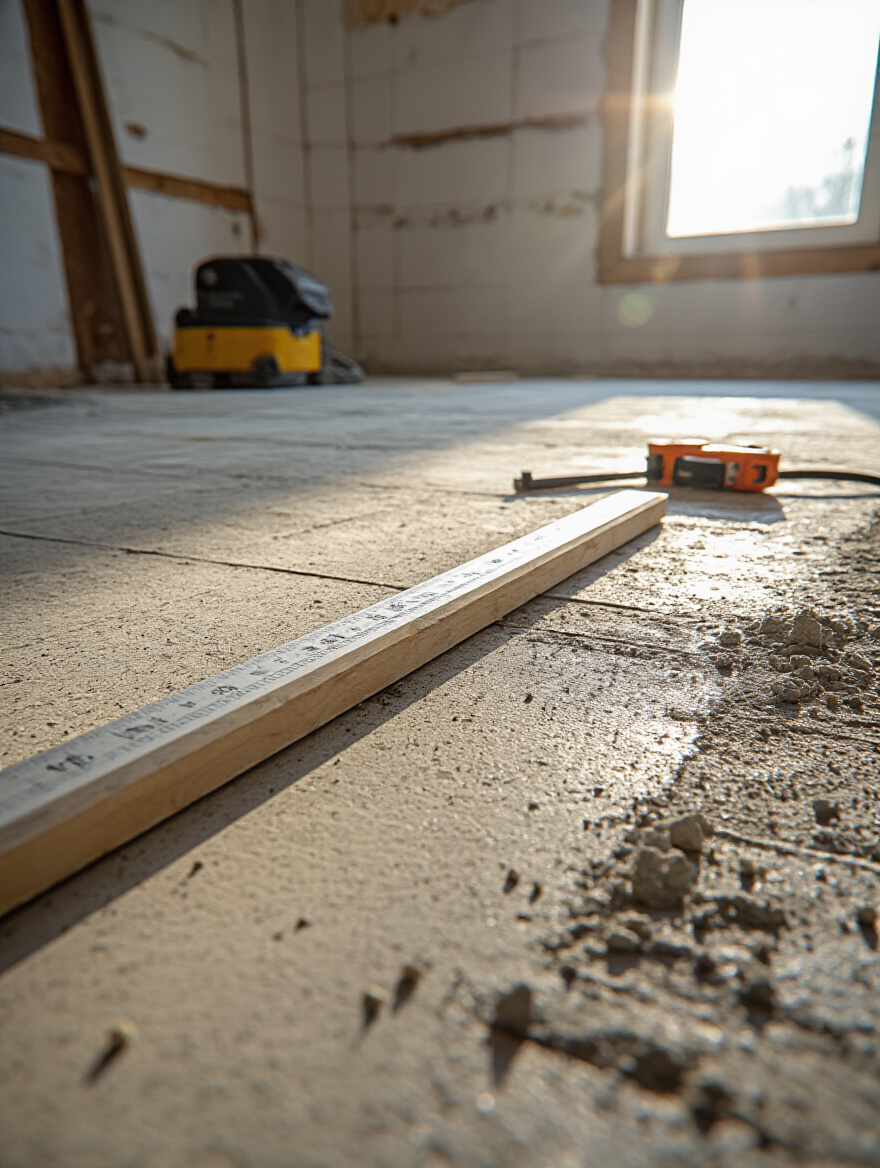
Before any new flooring goes down, your installer should meticulously check for levelness. Any high spots need to be ground down, and any low spots must be filled with a self-leveling compound. It’s a tedious, unglamorous job, but it is the most critical step in ensuring your new floor will be stable, durable, and beautiful for decades to come.
With a perfect foundation, it’s time for the finishing touches.
18. Implement Proper Sealing and Grouting for Enhanced Tile Longevity
Grout is not just the stuff that fills the space between your tiles; it’s a critical part of the floor’s defense system. While porcelain tile is waterproof, traditional cement grout is not. It’s porous, and if left unsealed, it will absorb water, dirt, and soap scum, leading to discoloration, mildew, and potential water damage underneath.
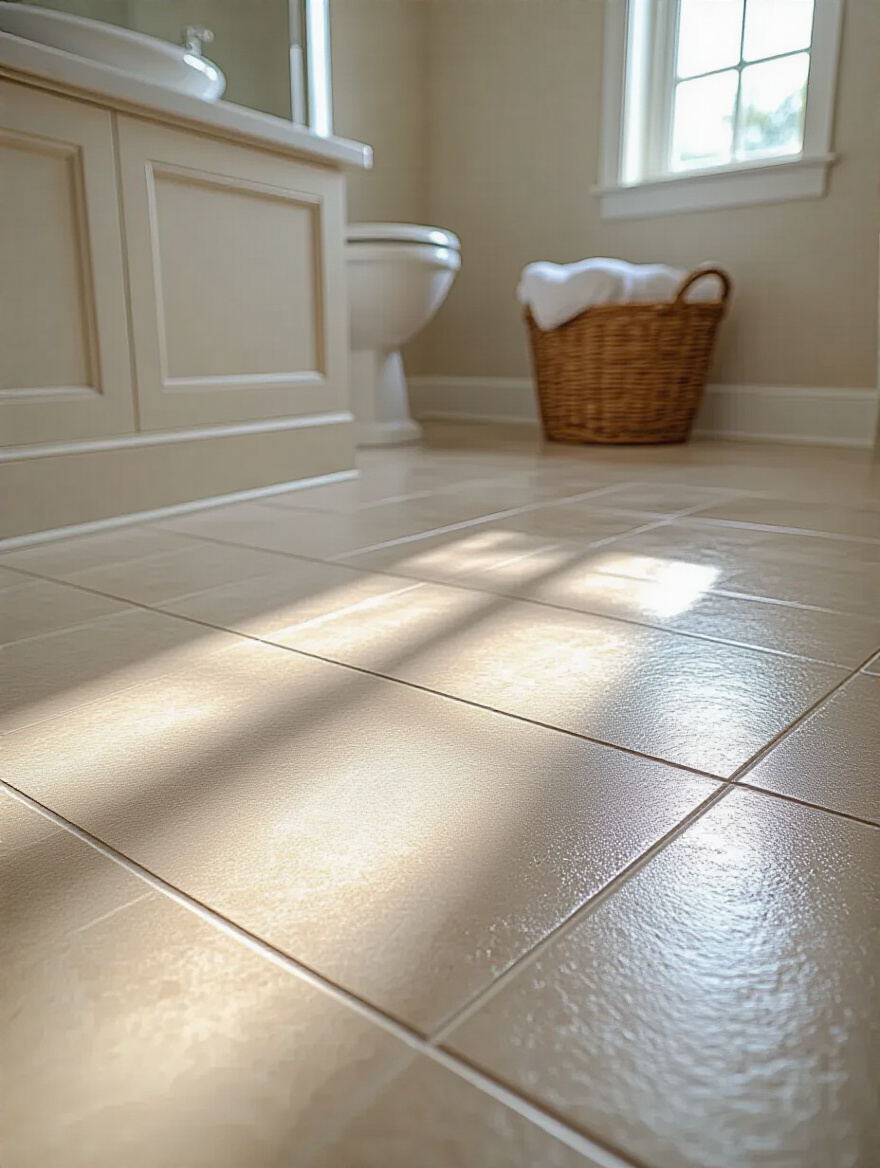
This is why sealing your grout is non-negotiable. After your tile is installed and the grout has fully cured, it must be sealed with a high-quality penetrating sealer. For an even more robust solution in a shower, I always recommend using epoxy grout. It’s inherently waterproof and stain-proof, so it never needs sealing. It costs a bit more, but the peace of mind is priceless.
And finally, let’s talk about keeping it all looking brand new.
19. Learn Easy Cleaning Methods to Maintain Your Bathroom Floor’s Beauty
The secret to a beautiful floor is not intense, back-breaking scrubbing. It’s gentle, consistent care. The most important thing you can do is use a cleaner that is specifically designed for your flooring material. Harsh, acidic cleaners or abrasive powders can strip sealants from grout and stone and dull the finish on tile and vinyl over time.
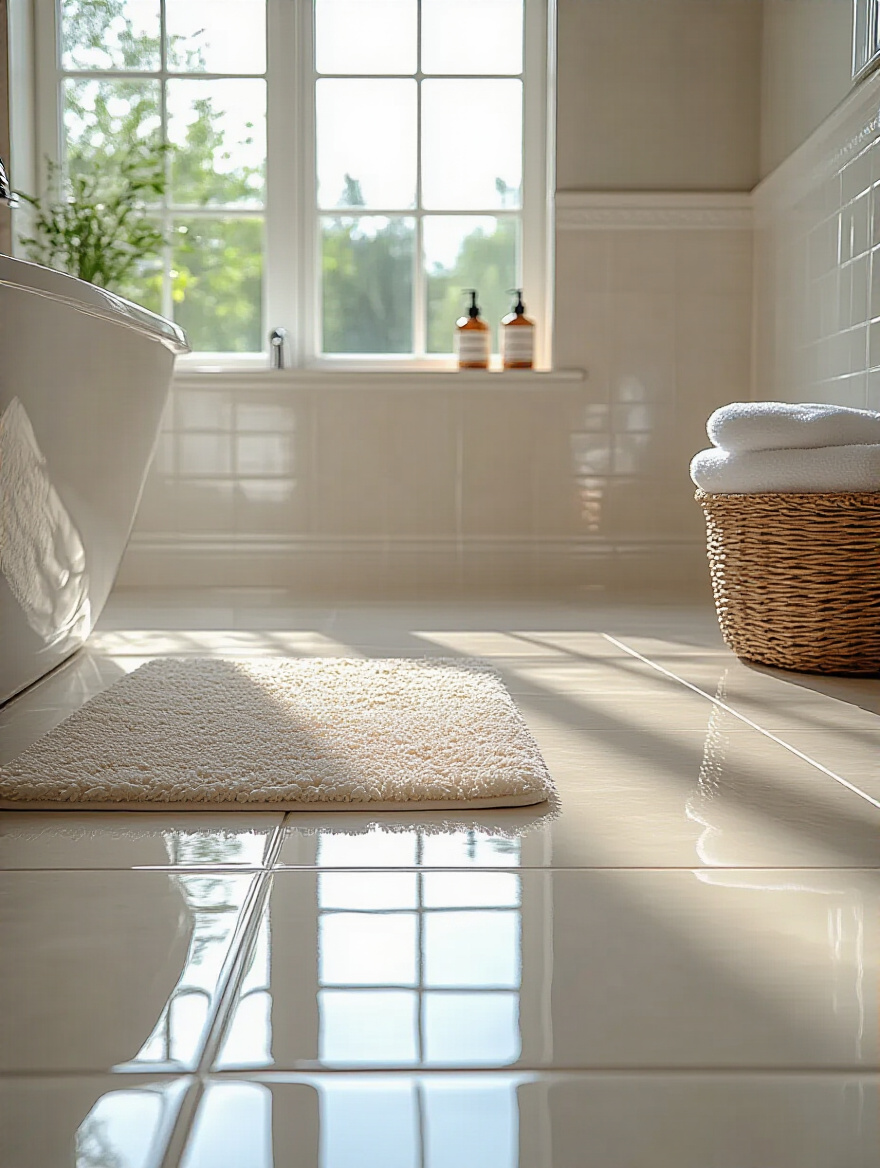
A simple routine of quick daily sweeps to pick up hair and dust, along with a weekly mop using a pH-neutral cleaner, is all most floors need. And of course, place absorbent, stylish bath mats by the shower and sink. They’re your first and best defense against water, and they can add a lovely layer of softness and color to the room.
Conclusion
So, you see, choosing a bathroom floor is a wonderful dance between the practical and the poetic. It’s about understanding the very real demands of a wet environment while also creating a space that feels like a personal sanctuary. It’s an opportunity to lay a foundation—quite literally—for a room that is as durable as it is darling.
Whether you fall for the timeless strength of porcelain, the quiet luxury of natural stone, or the clever practicality of LVP, you now have the knowledge to choose with confidence. Armed with these tips, you can create a bathroom that not only reflects your beautiful taste but is also a smart, lasting investment in your home. Go forth and create a space you absolutely love, from the ground up!
Meta Description: Isabella’s guide to 19 smart bathroom flooring options. Find the perfect blend of classic style, coastal durability, and timeless elegance for your home.
